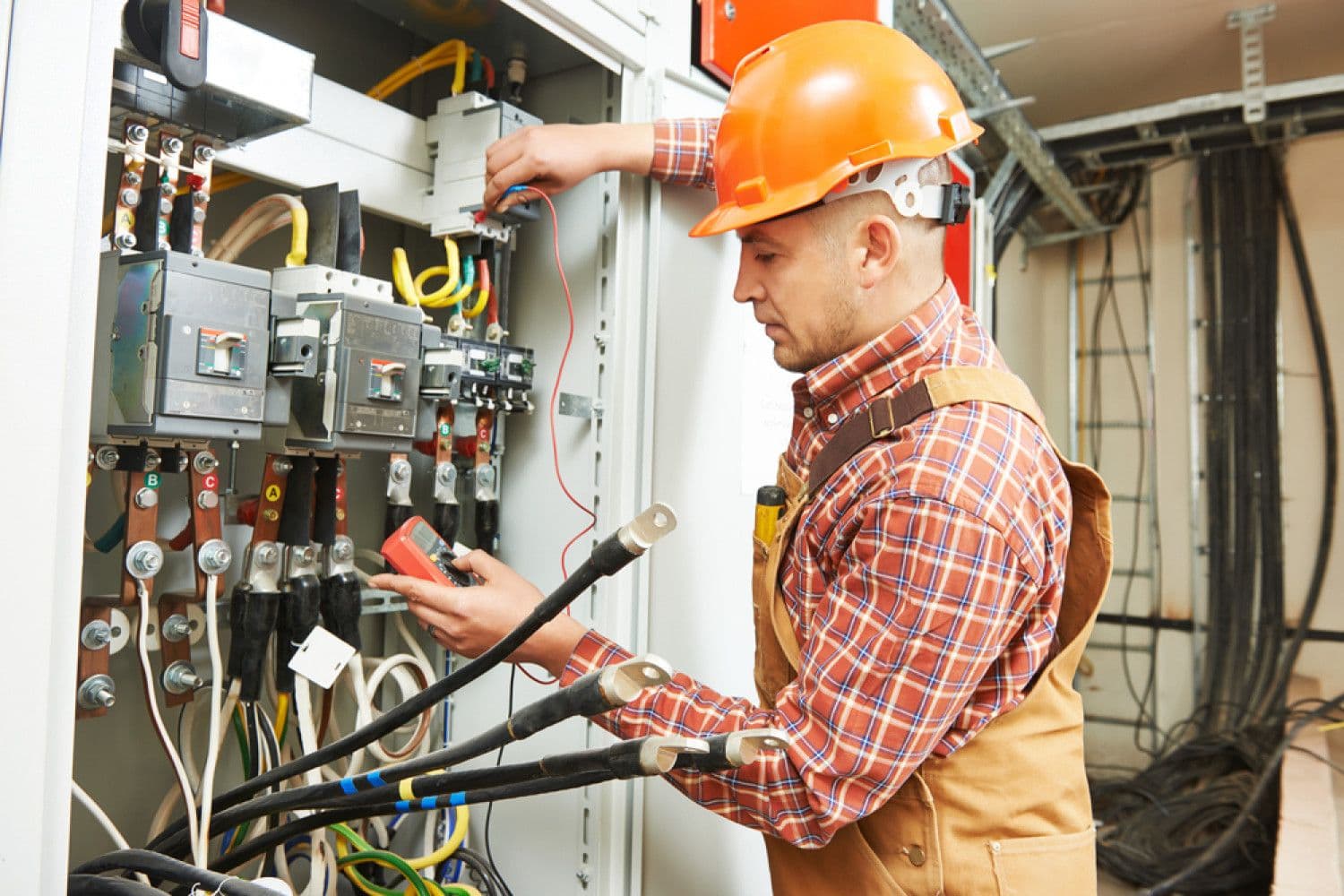
Why Does My Breaker Keep Tripping with Nothing Plugged In?
Troubleshooting Tripping Breakers: Understanding the Causes When Nothing Is Plugged In
Circuit breakers serve the crucial purpose of safeguarding your home's electrical system by interrupting the electricity flow when a fault is detected. Nonetheless, it can be quite confounding when a breaker trips, even without connected devices or appliances. This comprehensive guide explores the potential causes behind this occurrence, offering valuable insights on identifying the source of the electrical trips, assessing the significance of recurrent breaker trips, and recognizing the indications of a faulty circuit breaker.
"Why does my breaker keep tripping with nothing plugged in?"
This is a common concern that homeowners often express when faced with the puzzling situation of a tripping breaker without any devices connected. This comprehensive guide will explore the possible reasons behind this phenomenon and provide insights to help you understand and resolve the issue.
Electrical Services and Their Impact:
Electrical services play a crucial role in maintaining a safe and functional home. However, tripping breakers can arise, causing inconvenience and potential risks. We'll discuss how electrical services encompass various aspects, including emergency power and the importance of professional emergency electricians.
Understanding Breaker Trips with No Devices Plugged In:
Even though no devices are connected, your breaker trips can indicate an underlying problem. We'll examine common causes such as faulty wiring, overloaded circuits, or even issues with pool bonding. Understanding these causes will help you identify the root of the problem and take appropriate action.
Significance of Emergency Electricians:
In cases of persistent breaker trips or emergencies, it is crucial to rely on the expertise of emergency electricians. We'll explain their role in diagnosing and resolving electrical issues promptly and safely, ensuring the smooth functioning of your home's electrical system.
Emergency Power Solutions:
Unforeseen power outages can occur due to breaker trips or other electrical issues. We'll discuss emergency power solutions that can provide temporary backup electricity, allowing you to maintain essential functions until the underlying problem is resolved.
The Importance of Pool Bonding:
If you have a swimming pool or a spa, proper pool bonding is vital for electrical safety. We'll highlight the significance of pool bonding in preventing electrical hazards and ensuring the protection of swimmers and individuals in the vicinity.
Experiencing a tripping breaker when no devices are plugged in can be perplexing. By understanding the causes behind this issue, the role of emergency electricians, the availability of emergency power solutions, and the importance of pool bonding, you'll be better equipped to address and resolve electrical concerns. Remember, when facing such situations, it's always advisable to consult a professional electrical service provider to ensure the safety and functionality of your home.
Understanding the Functionality of Circuit Breakers
To gain insight into the causes of a breaker tripping with no devices plugged in, it's crucial to grasp the operational mechanism of circuit breakers. Circuit breakers serve as vital guardians of your home's electrical system, diligently monitoring the flow of electricity.
These devices are designed to swiftly detect and respond to faults such as overloads, short circuits, or ground faults. Circuit breakers promptly trip when such anomalies are detected, halting the electrical current to prevent potential hazards.
Typically housed within your home's electrical service panel or breaker box, each breaker is responsible for safeguarding a specific electrical circuit. These circuits may encompass outlets, light fixtures, or various appliances.
When a breaker trips, it becomes imperative to identify and address the underlying issue before resetting it, ensuring power restoration to the affected circuit.
Understanding Breaker Trips without Connected Devices: Exploring Possible Causes
Once we understand circuit breakers, we must explore the factors contributing to breaker trips even when no devices are plugged in. Several potential causes exist for this puzzling phenomenon. Faulty wiring is possible, as damaged or aged wiring can lead to short circuits or electrical leaks, prompting the breaker to trip as a safety measure.
Despite lacking any physical connections, overloaded circuits can cause breakers to trip if the course is burdened by excessive power demand from other connected circuits. Ground faults and leakage currents arising from damaged insulation or faulty equipment represent additional potential culprits.
Improper pool bonding can also lead to breaker trips, highlighting the significance of adequate grounding and bonding for pool equipment. By exploring these possible causes, we can gain insights into resolving the mystery of breaker trips when no devices are plugged in.
Implications of Damaged or Exposed Wiring
A possible reason for a breaker to trip without any devices plugged in is the existence of damaged or exposed wiring within the circuit. Over time, wiring can undergo damage due to various factors, such as insulation deterioration caused by rodents, exposure to moisture or heat, or general wear and tear. This compromised wiring can result in electrical faults, including short circuits or ground faults, which can trigger the breaker to trip, even without connected devices.
When wiring becomes damaged or compromised, it can give rise to electrical faults, including short circuits or ground faults. These faults can cause a breaker to trip, even when no devices are plugged into the circuit.
Damaged wiring poses a significant risk as it disrupts the proper flow of electricity, leading to potential hazards within the electrical system. Whether it's insulation deterioration due to rodents, exposure to moisture or heat, or general wear and tear, addressing damaged wiring is essential to ensure the safety and functionality of the electrical infrastructure.
Regular inspections and prompt repairs are crucial to mitigate the occurrence of electrical faults and prevent breaker trips in the absence of connected devices.
Identifying Issues with a Defective Circuit Breaker
A malfunctioning circuit breaker is another potential factor that can lead to a breaker tripping without any devices plugged in. Circuit breakers can experience wear and tear over time, resulting in damaged or failed internal components. Sometimes, a breaker may become overly sensitive, causing it to trip prematurely, even without an electrical fault.
To address this issue, it is advisable to seek professional assistance from electrical services or emergency electricians who can diagnose and rectify faulty circuit breakers. Proper maintenance and timely replacements can ensure the reliable operation of circuit breakers and minimize the occurrence of unwarranted tripping. Additionally, ensuring pool bonding for electrical safety can improve breaker performance and prevent unnecessary trips.
A defective circuit breaker can pose significant risks to your electrical system. It is essential to identify issues with a faulty breaker to prevent potential hazards and ensure the safety of your home.
This comprehensive guide will discuss key indicators of a defective circuit breaker and emphasize the importance of seeking assistance from professional electrical services and emergency electricians. Additionally, we will explore emergency power solutions and highlight the role of proper pool bonding in maintaining electrical safety.
Identifying issues with a defective circuit breaker is crucial for maintaining the safety and functionality of your electrical system. You can address these issues by recognizing critical signs of a faulty breaker and seeking assistance from professional electrical services and emergency electricians.
Additionally, considering emergency power solutions and adhering to proper pool bonding practices enhances electrical safety in your home. Prioritize regular maintenance and consult experts to ensure optimal performance and minimize the risks of a defective circuit breaker.
Becoming an Expert in Circuit Breaker Repair: A Guide to Professionalism
Becoming a professional in fixing circuit breakers requires knowledge, skills, and practical experience. Here are some steps to help you on your journey to becoming a proficient circuit breaker repair technician:
Gain a Solid Understanding of Electrical Systems: To begin your journey towards becoming a professional in fixing circuit breakers, establish a solid foundation in electrical theory and principles. Focus on understanding fundamental concepts such as circuits, voltage, current, resistance, and power.
Delve into the various types of circuit breakers, acquainting yourself with their components and their roles within an electrical system. By gaining this knowledge, you will lay the groundwork for your expertise in circuit breaker repair.
Acquire Technical Education and Training: Consider pursuing a formal education in electrical engineering or a related field. Enroll in technical courses or vocational training programs focusing on electrical systems and circuitry. These programs can provide you with hands-on experience and practical knowledge.
Obtain Licensing and Certifications: Depending on your location, you may need specific licenses or certifications to work as an electrician or circuit breaker technician. Research the requirements in your area and pursue the necessary credentials to ensure you are legally allowed to work on electrical systems.
Apprenticeship and On-the-Job Training: Seek apprenticeship opportunities or entry-level positions with experienced electricians or electrical service companies. This practical experience will allow you to gain hands-on knowledge in diagnosing and fixing circuit breakers under the guidance of professionals.
Stay Updated with Industry Standards and Codes: Familiarize yourself with relevant electrical codes and safety regulations. Keep up-to-date with industry practices, technological advancements, and safety protocols through continuous learning and professional development.
Develop Troubleshooting Skills:
- Master the art of troubleshooting electrical problems.
- Learn how to use testing equipment such as multimeters, circuit analyzers, and thermal imaging cameras to accurately identify faults in circuit breakers.
- Develop a systematic approach to diagnose issues and determine the appropriate repairs.
Develop Safety Consciousness:
Electrical work can be dangerous, so always prioritize safety. Understand proper safety procedures, use personal protective equipment (PPE), and follow safety guidelines to prevent accidents and protect yourself and others from electrical hazards.
Build a Professional Network: Connect with other professionals in the electrical industry, such as electricians, electrical engineers, or technicians. Join industry associations or attend trade shows and conferences to network and exchange knowledge with peers.
Continuously Improve Your Skills:
- Stay curious and embrace lifelong learning.
- Seek opportunities to expand your knowledge and skills through workshops, seminars, online courses, and certifications.
- Stay updated with the latest advancements in circuit breaker technology and repair techniques.
Provide Excellent Customer Service:
Being professional means having technical expertise and delivering excellent customer service. Communicate effectively, listen to clients' concerns, and explain the issues and repairs clearly. Maintain professionalism, punctuality, and integrity in your work.
Remember, becoming a professional in fixing circuit breakers is a continuous journey of learning and practical experience. Strive to develop your skills, stay updated with industry advancements, and prioritize safety to become a professional and respected circuit breaker repair technician.
Troubleshooting tripping breakers when nothing is plugged in requires a thorough understanding of the potential causes behind this puzzling issue. By grasping the basics of circuit breakers and how they function, you can better navigate the complexities of electrical systems.
We explored possible reasons for breaker trips without connected devices, including damaged or exposed wiring, faulty circuit breakers, and overloads. Remember to prioritize safety and consult professional electrical services or emergency electricians when dealing with complex electrical issues.
By staying informed, addressing underlying problems promptly, and ensuring proper maintenance, you can maintain a safe and reliable electrical system in your home or business.
Need Assistance or Have Inquiries?
At Incan Electric, we value your interest in our exceptional electrical services. Our commitment lies in delivering superior workmanship and ensuring excellent customer service for clients located in Southeastern Wisconsin. If you have any questions or wish to schedule an electrical service within the southeastern Wisconsin area, please don't hesitate to contact us using the contact information below.
Email: [email protected]
Operating Hours: Monday to Saturday, 7:00 AM - 11:00 PM
Phone: (262) 235-5444
We look forward to addressing your electrical needs and satisfying your experience.



